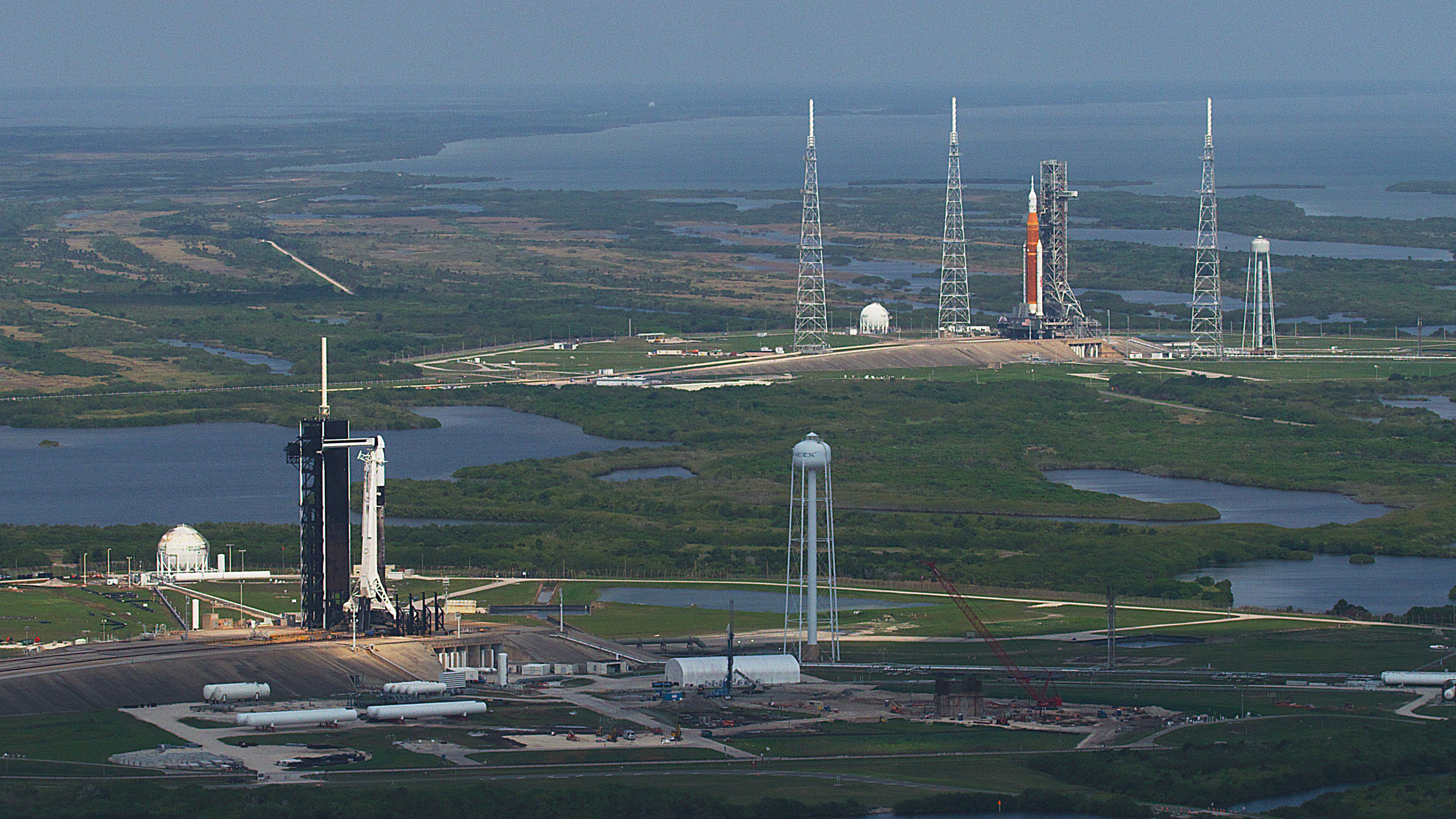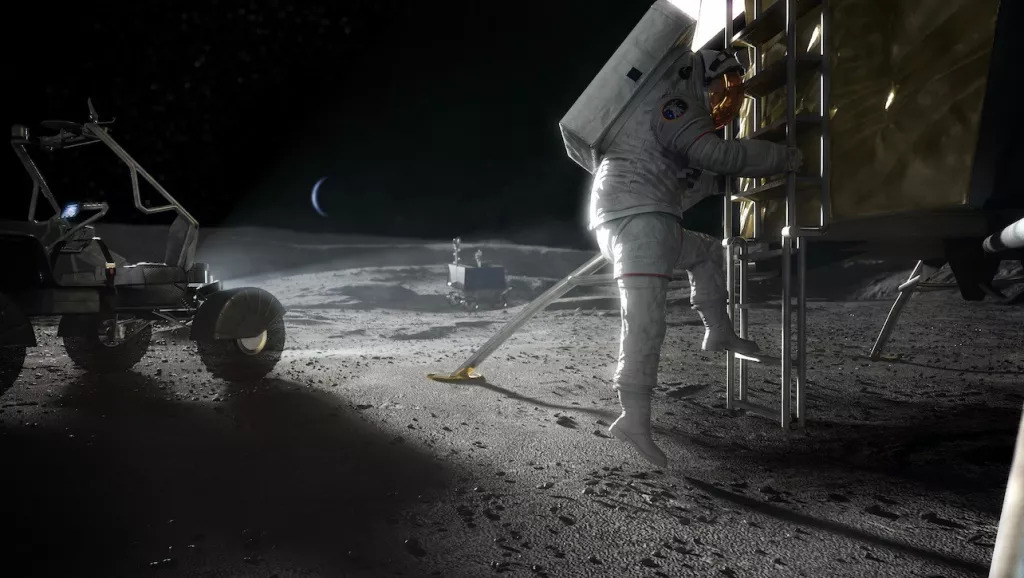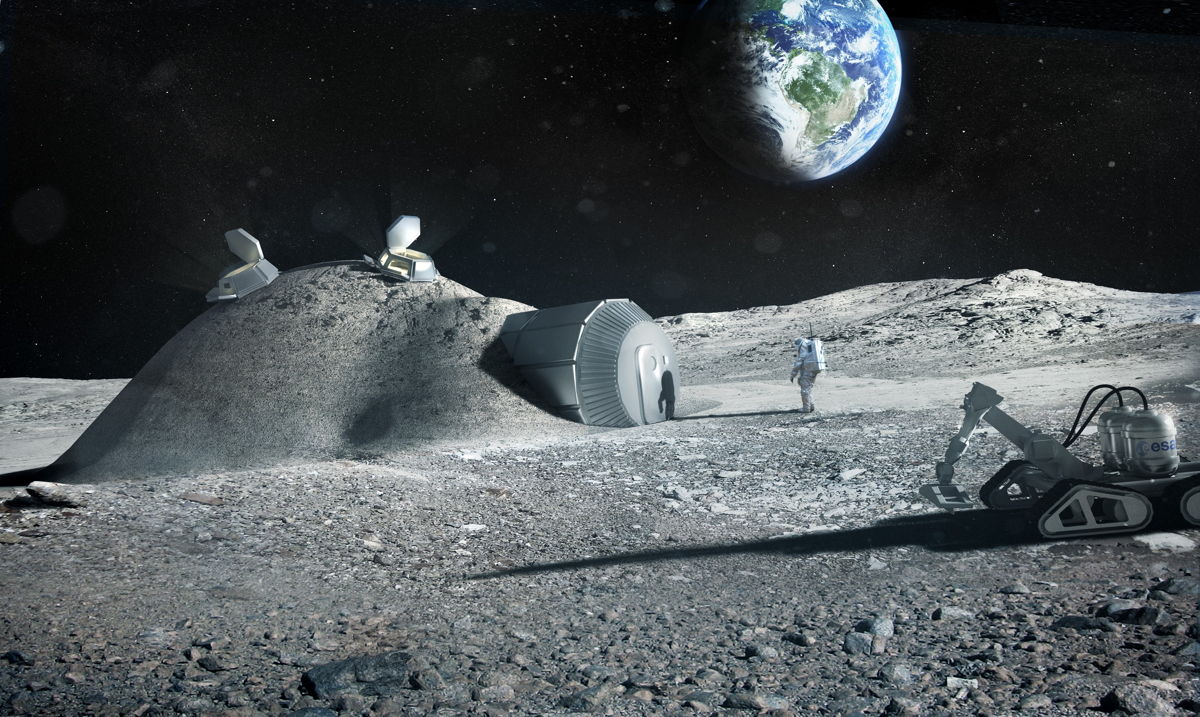Artemis moon program will boost science and private spaceflight, NASA says

Sending astronauts back to the moon will have considerable benefits both scientifically and economically, NASA officials stressed.
That message came through during a discussion of NASA's Artemis program of lunar exploration that was held April 5 at the 37th annual National Space Symposium in Colorado. The discussion, called "Artemis and the Industry: Building the Space Economy," included panelists Kenneth Bowersox, NASA deputy associate administrator for space operations; James Free, NASA associate administrator for exploration systems development; James Reuter, NASA associate administrator for the Space Technology Mission Directorate; and Thomas Zurbuchen, NASA associate administrator for the Science Mission Directorate.
Artemis aims to establish a long-term, sustainable human presence on and around the moon by the end of the 2020s. The program will use the Space Launch System (SLS) megarocket, the Orion crew spacecraft, a small moon-orbiting space station called Gateway and cutting-edge exploration ground and astronaut landing systems.
Live updates: NASA's Artemis 1 moon mission
Related: NASA's Artemis 1 moon mission explained in photos

The first mission in the program, Artemis 1, will launch Orion on an uncrewed flight around the moon in June or thereabouts, and NASA is currently gearing up for the liftoff with a crucial test known as a "wet dress rehearsal."
This trial, which includes fueling of Artemis 1's SLS rocket, began on April 1 at NASA's Kennedy Space Center (KSC) in Florida and was intended to wrap up two days later. But technical issues delayed things a bit, and the mission team then stood down to accommodate the April 8 launch from KSC of the private Ax-1 astronaut mission to the International Space Station.
The wet dress rehearsal is scheduled to resume Tuesday (April 12) at 5 p.m. EDT (2100 GMT) and finish up on Thursday afternoon (April 14).
Breaking space news, the latest updates on rocket launches, skywatching events and more!
Artemis 1 will be followed by Artemis 2, a crewed lunar flyby scheduled to lift off in 2024, and the crewed Artemis 3 landing in the moon's south polar region, which is expected in 2025 or 2026.
These inspiring advances are being made possible through myriad partnerships with private enterprise to create a robust space economy, NASA officials said during the Artemis panel discussion.
"Our mission is to work across all of NASA with all five mission directorates," Free said.
Though Artemis is focused primarily on science, "there's economic opportunities across the board from our perspective," he added. "We're about to award a [spacesuit] contract that was based on services from other people using spacesuits in the future. We're developing the next set of landers that can then be a services contract where other people can use those landers for their own purposes."
Bowersox agreed that relationships being built for Artemis will help grow the space economy.
"There are a lot of ways" to make the space economy bigger, he said.
"One way is, just grow the federal budget and spend more money," Bowersox said. "Another way is to bring in private capital. It's a lot harder, from a government perspective, to come up with ways to bring in that private capital and expand the work that's going on. But I think it's got the biggest potential to help us accomplish the things we want to do in space exploration."
He cited the progress made with commercial cargo and crew flights to the International Space Station, which companies such as SpaceX now fly with regularity.
Related: SpaceX's Crew-3 astronaut mission for NASA (photos)
"One of the hardest things for us on the government side has been to release some of the control we had," Bowersox said. "By releasing some of the control to commercial partners that we built trust relationships with, we can get so much more back. And I think we're going to see that trend continue into Artemis, and it has a lot of wonderful potential as we explore further out into the solar system."
And these commercial partnerships will help open up more science opportunities, Zurbuchen said.
"With this new space economy, we can do missions and do work in ways that was the stuff of dreams even five years ago," he said.
"What has happened with the commercial lunar payload services [CLPS], and the various contracts there, is that it's created an innovative flywheel that has frankly created an amount of innovation in planetary instrumentation and technology that we haven't seen in decades," Zurbuchen added. "That's what happens if you have a new space economy. You can start driving new development paradigms, can take more risk, create innovation platforms that are otherwise not there and create a community that will be available."
Reuter noted that NASA's Space Technology Mission Directorate pursues transformative technologies for human and robotic missions, allowing for the growth of commercial space in the process.
"A big part of what we do is support Artemis," he said. "On the lunar surface, we have over 30 technologies flying [on robotic CLPS missions], doing all kinds of things to help establish a sustainable presence on the moon. The power systems that we might deploy; are there construction activities we can do? How do we access areas that are extremely difficult to reach? All that in concert with universities and within the industry and with our own NASA folks."

Wrapping up the presentation, moderator Lauren Smith challenged the panelists to look beyond Artemis and envision what the space economy might look like two decades from now.
"I think I see it evolving much like low Earth orbit has," Free said. "Our access to the ISS is now a service. I would expect us to have built the sustainability that allows us to access the lunar surface in a commercial way as well … In 20 years, I hope there is some sort of infrastructure on the lunar surface that is available to commercial entities that we still use, but not as the sole owner, and we are pushing on our way to Mars."
Zurbuchen said there are extremely important transitions that are hard to predict, but that we're already on the horizon now.
"The availability of big launch systems fundamentally changes how we do things," he explained. "The question is, How do we transfer our future in this environment? How do we create solutions for advanced telescopes for Earth-observing systems that really use these tool sets that we've talked about?
"To me, a significant fraction of science will move into that space, and our job as an agency is to first utilize that but also focus on the leading edge and trying to make sure, I hope, that we build 20 years from now a spacecraft that goes to other stars."
Follow us on Twitter @Spacedotcom or on Facebook.

Jeff Spry is an award-winning screenwriter and veteran freelance journalist covering TV, movies, video games, books, and comics. His work has appeared at SYFY Wire, Inverse, Collider, Bleeding Cool and elsewhere. Jeff lives in beautiful Bend, Oregon amid the ponderosa pines, classic muscle cars, a crypt of collector horror comics, and two loyal English Setters.
